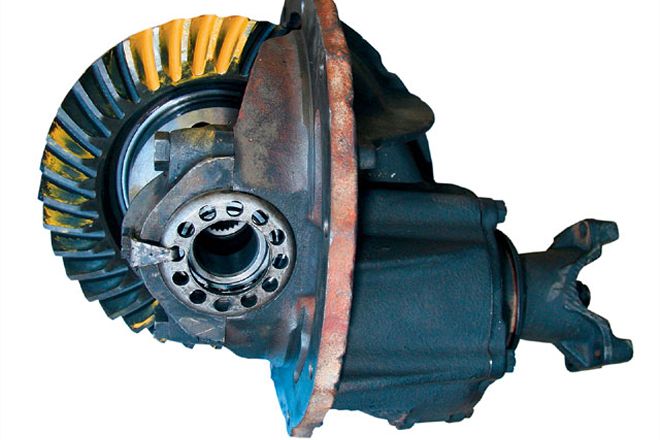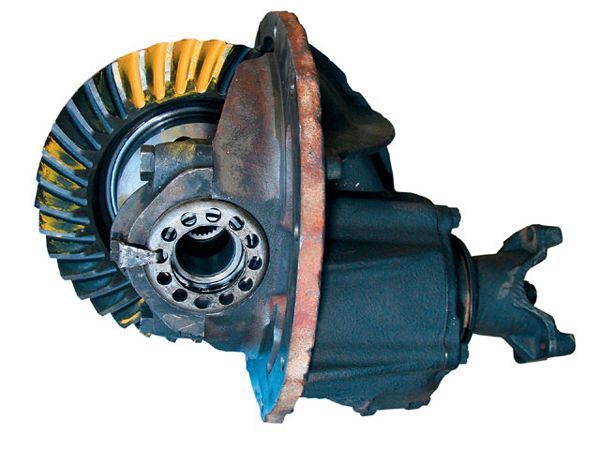
 Ali Mansour
Brand Manager, 4WD & Sport Utility
Photographers:
Jason Gonderman
Ali Mansour
Brand Manager, 4WD & Sport Utility
Photographers:
Jason Gonderman
 Cool Fact:
Cool Fact:Being frugal is not just our nature, it's a way of life. So it's no surprise when we needed a rear axle for a full-width mini-truck project that we hit the junkyards in search of the legendary Ford 9-inch. A staple in the off-road world since its first appearance in the 1950s, the 9-inch has enabled rockcrawlers and racers alike to benefit from Dana 60-like strength, but avoid the weight drawbacks of heavier rear axles. Not only are they relatively easy to find, but undoubtedly one of the most heavily supported axles by the aftermarket industry.
So what makes the 9-inch the perfect axle for the backyard builder? Engineered with a removable centersection (erroneously referred to as a third member at times), you can easily swap it with an upgraded unit like the one we got from West Coast Differentials. Stuffed with 5.13 gears and a Detroit locker, the unit comes ready to drop into the factory 9-inch housing. No fiddling around with dial indicators or shimming pinions, simply remove the original diff, clean and inspect the housing, then slap your new one in. Other than being a little heavy, it's truly easy swap-if you can change your oil, you can replace a diff.
From coast to coast these beauties are available for 20 to 150 bucks in a variety of widths and perch configurations. We plucked ours from an early '80s Bronco that was missing the original center but still had the big bearing 31-spline shafts fully intact along with the factory drum brakes. Although the 9-inch is no Dana 80, we have plenty of confidence that the factory shafts and new centersection will handle the 37-inch-tall tires with all the gearing and engine we can throw at it for a long while to come.





